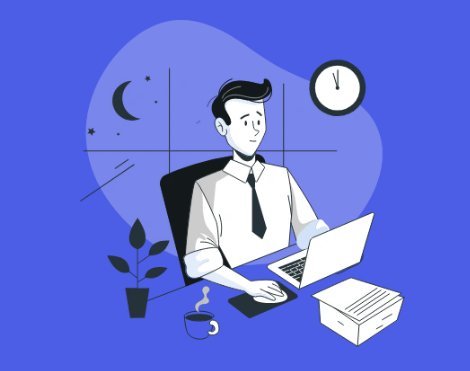This is the age of video content. Video marketing is inarguably one of the most effective and widely used tools for sharing your message about a service or product and the entertainment or education of target consumers. However, producing videos is one of many solutions available; your videos should be professionally made, attractive, and strategic to be unique. Below is the list of the 10 video production Tips you should apply to improve your marketing strategies and guarantee your videos are impactful.
Table of Contents
ToggleVideo Production Techniques to Follow
1. Storyboarding
Storyboarding must be done before any form of shooting is conducted, even with the camera at hand. It is a pre-production technique that requires outlining each scene of your video on paper or through any computer tool. Storyboarding enables a clear envisioning of the actual video, shot by shot, so that no part is out of sync with the intended outcome. To record a video, you outline what you are going to cover and the kind of shots you want to take, so during the actual shooting and post-production process, it could take less time, and the final piece would be more coherent and engaging.
2. High-Quality Audio
Here it is vital not to overlook the importance of a good sound when videos and other visuals are so important. Effective sound can add to the observer’s experience, which can be greatly hampered by ineffective sound. Make sure your microphone is of good quality, and that you don’t overdo or underdo your sound at the final mixing. Another way is by including the lyrics to the background music or by sound effects making one’s video have the right mood or tone.
3. Lighting Techniques
Light, or the lack of it, can be pivotal in the success of any video that you are producing. Daylight is very good, but the problem it comes with a lot of vices that really make it hard for one to rely on it fully. There are some general concepts that are important to have to be able to take good pictures utilising artificial lighting sources, three-point lighting, for example. Lighting is critical since it determines the quality of the subjects, the correctness of the colors, and the appearance of the general outlook.
4. Use of B-Roll Footage
The shots that can be shot simultaneously and are incorporated in between main shots are called b roll and augment the relevance of the video. It can be utilized to show the audience what your subject is discussing, as visuals, or as a cover-up to cuts made on the main scenes. B-roll is useful when used properly because it brings detail and depth to the footage that cannot be achieved if only straight interviews were to be used.
5. Incorporating Motion Graphics
Animation is also quite effective particularly when presenting information to an audience that needs to be convinced on aspects that might be technical and hitherto complicated. Apart from logos and texts, information graphics or an engaging title of a video, for instance, can benefit from using the motion aspect. It is especially used in explainer videos and product demos.
6. Optimizing Video Length
And consumers are notoriously fickle these days, good only for distraction for the masses or a bathroom break from reality. There is a tendency to cram as much information into one video as it is possible, but it is typically not the best course of action. Its length should be decided based on your content and your audience—In general, you have short ones that are about 60-90 seconds usually for social media and longer formats are good for things like tutorials or testimonials.
7. Captivating Thumbnails
The thumbnail is the first look the viewers get into the video, and it has a profound impact on what follows, they may or may not click your video. Liked thumbnails that draw viewers’ attention and are correspondent to the content which contain bright and interesting visuals or captions. It emerges that bright colors, expressive faces and heavy fonting are some of the tendencies that can work well. Having a well-designed thumbnail means that increases the click-through rate with ease due to the fancy look of the thumbnail in relation to the video.
8. Leveraging Social Proof
When you post videos, adding and using the testifiers, other customers or influencers’ recommendations can help to make your channel trustworthy. Social proof is a psychological tendency where people are more inclined to believe something that is endorsed by other people. Using satisfied customers in your advertisement or using real-life testimonials may make your brand seem more credible.
9. Call-to-Action (CTA) Integration
Every marketing video should have a clear call to action (CTA). Whether you want viewers to visit your website, subscribe to your channel, or make a purchase, a CTA guides them on what to do next. Place your CTA strategically—either in the middle, at the end, or both—and make sure it’s clear, compelling, and easy to follow.
10. Editing for Impact
The editing process is where your video truly comes to life. Good editing can enhance the pacing, mood, and overall impact of your video. Use jump cuts for energy, crossfades for smooth transitions, and color correction to maintain visual consistency. Don’t be afraid to experiment with different editing techniques to find what best suits your brand and message.
Conclusion
By implementing these top 10 video production techniques by corporate video production company, you can significantly enhance the quality and effectiveness of your marketing videos. From pre-production planning to post-production editing, each step plays a crucial role in creating content that resonates with your audience and drives your marketing goals. Remember, the key to successful video marketing is not just in the execution but in the strategy behind it.
FAQs
1. How long should my marketing videos be?
The ideal length for marketing videos depends on the platform and your audience. For social media, keeping videos between 60 to 90 seconds is usually effective. Longer videos, such as tutorials or webinars, can be 10 minutes or more, depending on the content’s complexity and depth.
2. What equipment do I need for high-quality video production?
At a minimum, you’ll need a good camera (a DSLR or mirrorless camera is ideal), a tripod, proper lighting (such as softbox lights or ring lights), and a quality microphone for clear audio. Additionally, video editing software is crucial for post-production.
3. How can I make my videos more engaging?
To make your videos more engaging, focus on storytelling, use high-quality visuals and audio, incorporate motion graphics, and include a strong call to action. Keeping your videos concise and to the point while also ensuring they are visually appealing will help retain viewer interest.








